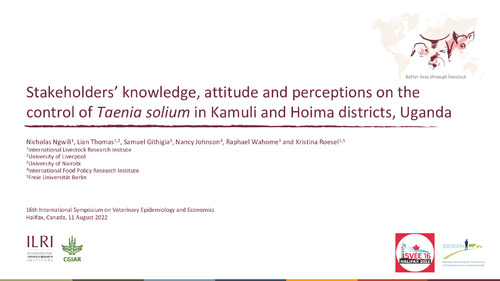Stakeholders’ knowledge, attitude and perceptions on the control of Taenia solium in Kamuli and Hoima districts, Uganda
Abstract
Objective:
Taenia (T.) solium is a zoonotic parasite causing three diseases: - Taeniasis and cysticercosis in
humans and porcine cysticercosis in pigs. Although biomedically, the transmission of the parasite
can be easily interrupted at six points along the life cycle, the contextual factors that may influence
the adoption of these control strategies in Uganda remain unclear. This study assessed the
stakeholders’ knowledge, attitudes and perceptions relating to the six control strategies for T. solium
infections in Kamuli and Hoima districts, Uganda.
Materials and Methods:
A total of 22 focus group discussions (FGD) were conducted with pig farmers, community leaders,
pig/pork traders, animal health assistants and human health assistants. In addition, nine key
informant interviews were held with senior officials in the ministries of agriculture and health, and
other relevant agencies at the district level.
Results:
The results showed differential, limited and fragmented knowledge on T. solium infections among
stakeholders. Pig farmers, community leaders and pig/pork traders had almost no knowledge and
were often confused regarding the differences existing between T. solium and other gastro-intestinal
infections in pigs and humans. Pig confinement, pit latrine construction, coverage, maintenance and
sustained use are influenced by cultural, socio-economic, and physical/ environmental factors of
study population and area.
Conclusion:
Proper sensitization programmes and health education interventions should target all, but with
material appropriately focused to suit the different stakeholder’s categories. Reminders or nudges
may be needed to ensure that increase in knowledge translates to changes in practice. Intervention
programmes should also aim to overcome challenges created by the various contextual factors
operating in the specific endemic areas.

